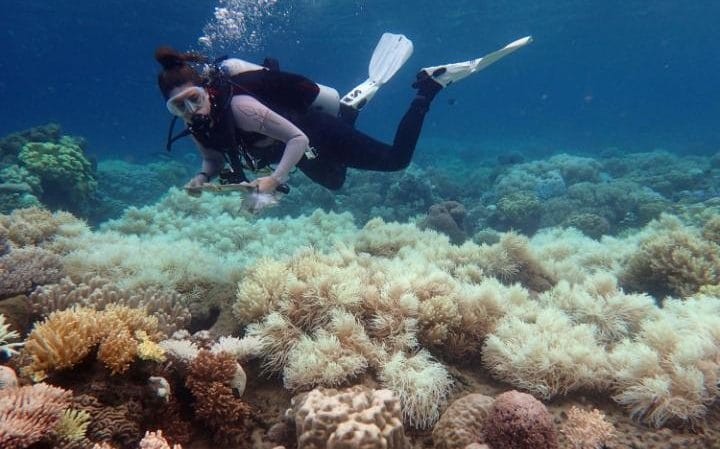Great Barrier Reef damaged beyond repair
Hong Van -
(VOVWORLD) - The Great Barrier Reef in Australia has suffered rapid bleaching, which, according to scientists, will become more serious without prompt preventive measures.
 Coral bleaching is rife on the Great Barrier Reef Credit: AFP/Getty Images Coral bleaching is rife on the Great Barrier Reef Credit: AFP/Getty Images |
The Great Barrier Reef is the world’s largest living eco-system. It stretches2,600 km along the northeastern coast of Australia. A major tourist destination, the reef contributes more than 7 billion USD to Australia’s economy annually and provides a livelihood to more than 70,000 nearby residents.
In 1981, the Great Barrier Reef was recognized as a World Natural Heritage. Due to environmental factors, approximately one quarter of the reef near Cairns, Queensland, has disappeared. The main reason for the reef’s bleaching is record-breaking temperatures in March and April. Professor Terry Hughes, Director of the ARC Centre of Excellence for Coral Reef Studies at James Cook University, says global warming has caused 4 major bleaching events in the last 19 years. The Centre’s James Kerry says coral bleaching does not necessarily make the coral die, but on the Great Barrier Reef the mortality risk is high. Surveys of the reef have revealed that approximately 29% of all shallow water coral died from bleaching in 2016, with most of the dead coral occurring at the north end of the reef, off Port Douglas, where 70% of the shallow water coral died. Coral bleaching has been most severe between Cairns and Townsville, two popular tourist destinations. This was the fourth major bleaching event on the Great Barrier Reef since 1998. The management board of the Great Barrier Reef Marine Park Authority says the coral bleaching has spread to deeper coral, beyond the depths divers typically are able to reach and it is expected that the damage will continue through the end of 2017.
The mass bleaching in the last two years makes the reef’s recovery more doubtful. The reef is already under pressure from farm run-off, development, and the crown-of-thorns starfish, problems which were compounded this year by a powerful cyclone pummeling the area. Leading marine experts recommend developing coral nurseries, culling crown-of-thorns starfish, expanded monitoring, identifying priority sites for coral restoration, and slashing greenhouse gas emissions to prevent further sea temperature rises.
Hong Van